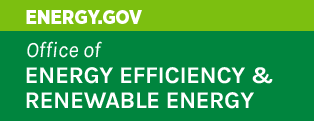Community Benefit Agreements
Wind Energy Community Benefits Database
This searchable database reflects community benefit agreements (CBAs), community benefit funds, donations, and other forms of benefits from land-based and offshore wind energy developments in the U.S. compiled by the National Renewable Energy Laboratory (NREL) from 2022 to 2024.
If you would like to submit a CBA that is not represented in this database, please email windcommunitybenefits@nrel.gov .
For more information about how community benefits are developed and the role they play in wind energy development, please visit the Wind Energy Community Benefits Guide. Learn more about the community impacts of wind farms.What Forms of Community Benefits Does This Database Include?
Community benefits for wind energy projects can be structured in many ways, but the following categories are the most common and are the focus of this database:|
Project Name
|
State
|
County
|
Form of Benefit
|
Additional Form
|
Infrastructure Type
|
Number of Turbines
|
Generating Capacity (MW)
|
Year Built
|
|---|---|---|---|---|---|---|---|---|
| Vineyard Wind 1 | Massachusetts | Federal waters | Formal agreement | Fund | Offshore wind energy project | 62 | 800 | Under construction as of 2024 |
Developed, Owned, or Operated by Vineyard Wind
Funding for energy storage and solar projects for public buildings in communities on the island and on the mainland. SourcesVerified by WINDExchange on Aug. 1, 2024 |
||||||||
What Forms of Community Benefits Are Not Included in This Database?
CBAs and related forms of community benefits may be provided alongside other agreements or economic impacts that serve different purposes, such as:
- Land lease payments to landowners that host wind turbines.
- Project labor agreements for construction of wind energy projects.
- Taxes or tax agreements like payment in lieu of taxes (PILOTs).
- Direct compensation to impacted stakeholders, such as commercial fishermen.
This database does not include these other types of wind energy benefits, as they differ from CBAs and related benefit mechanisms in several key ways; namely, the community benefits included in this database are unrelated to taxation, are intended to provide benefits to the community as a whole rather than a specific group of people, like landowners, and are separate from impact mitigation measures required by permitting agencies.
